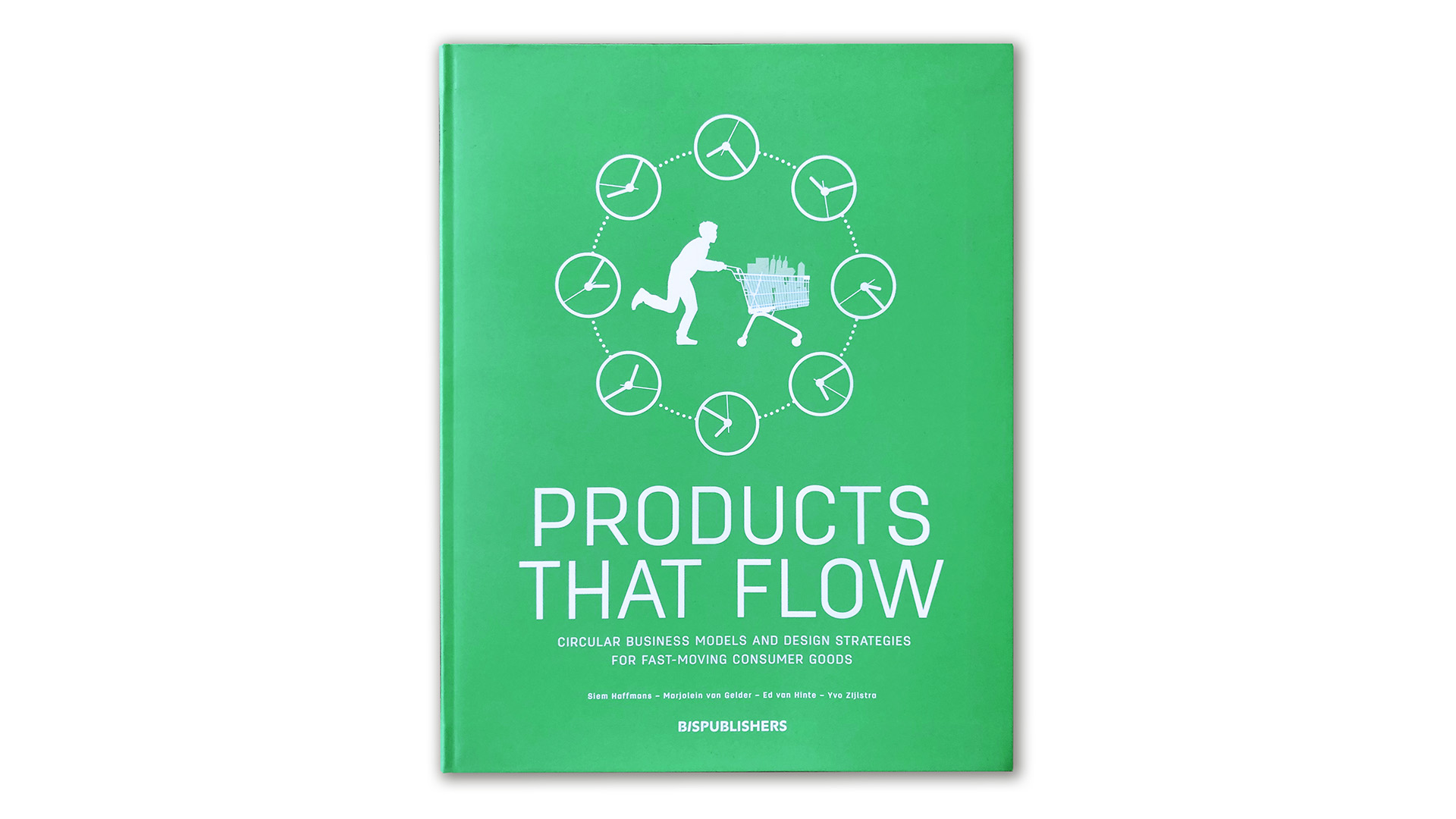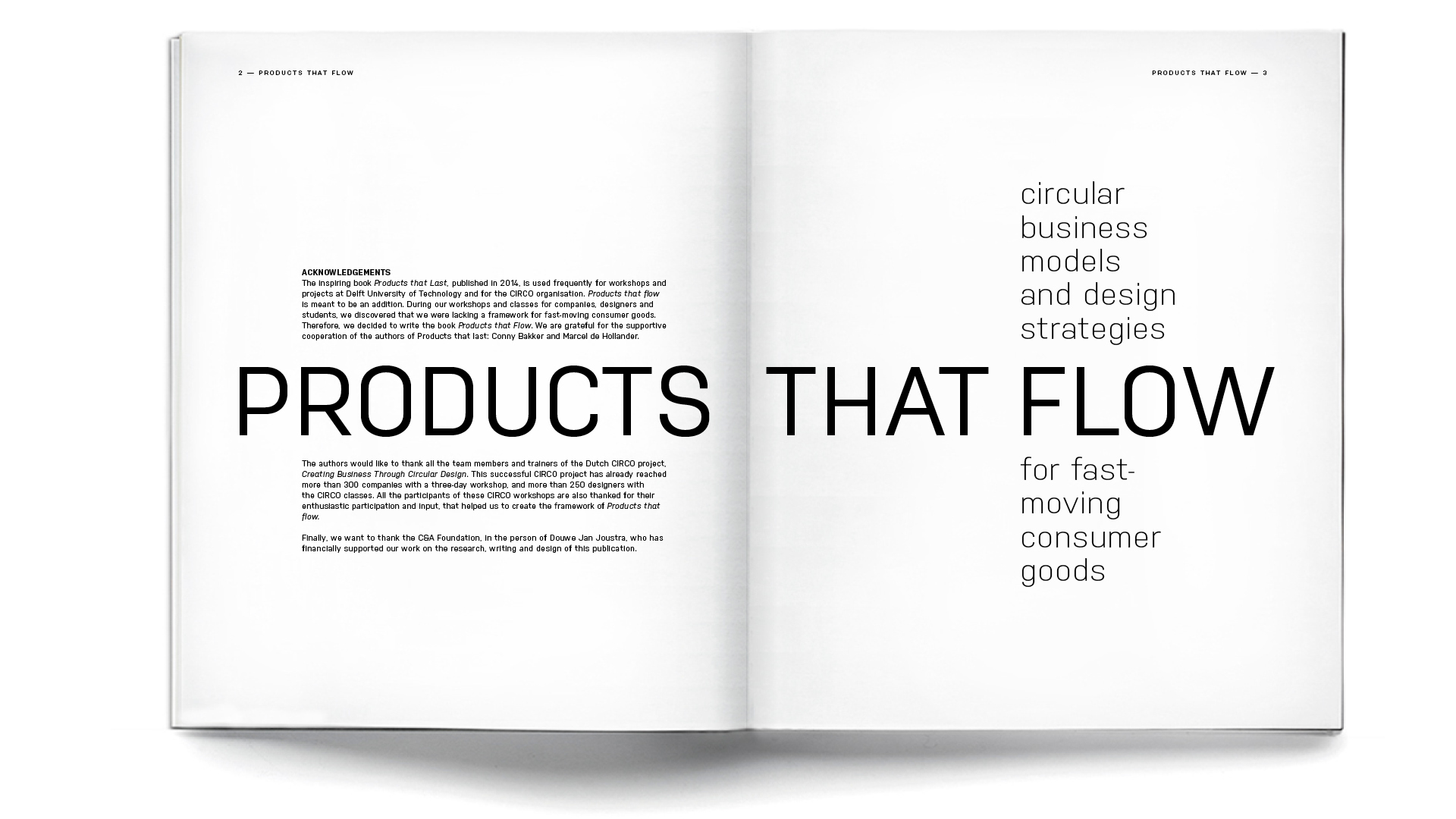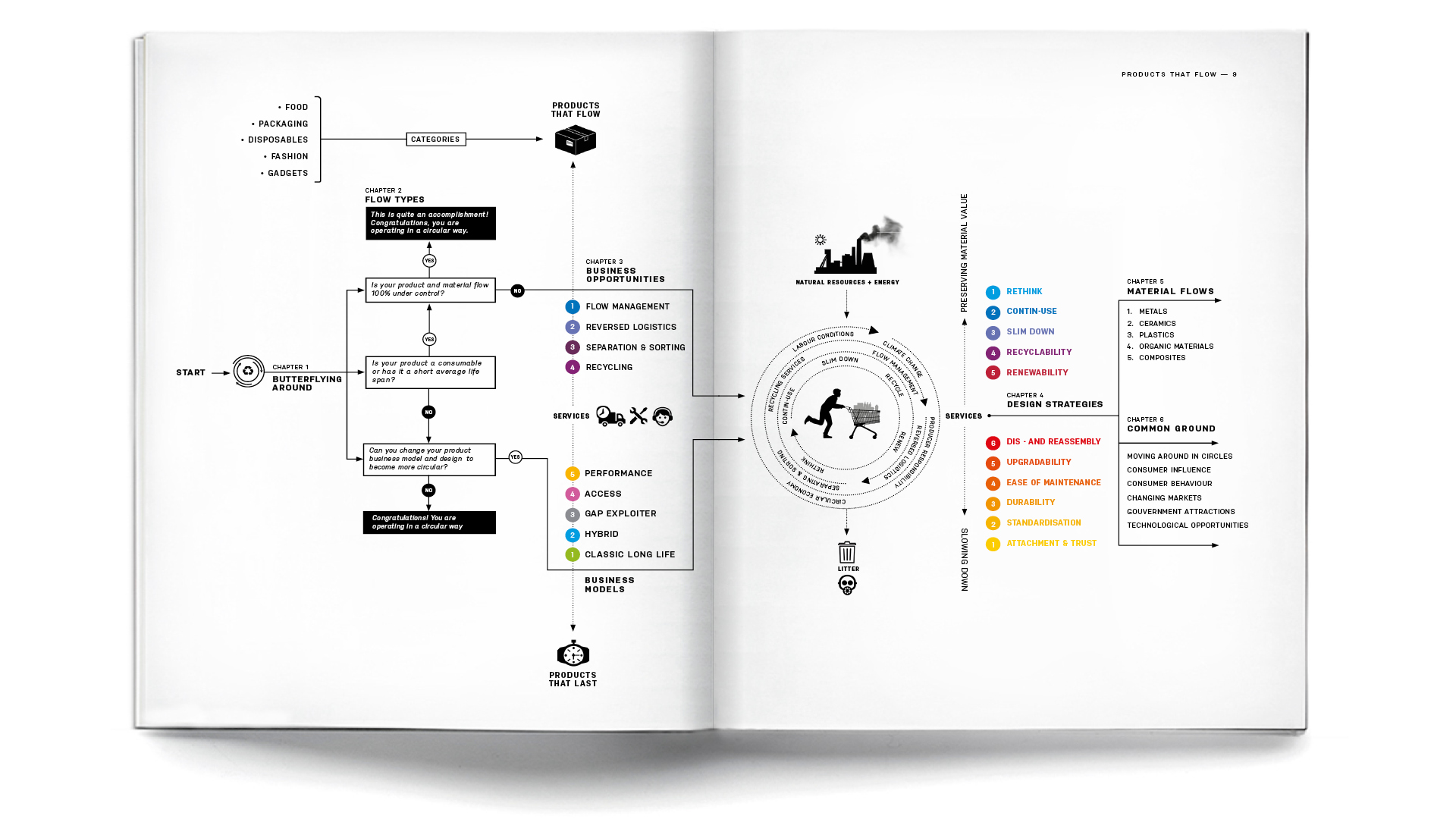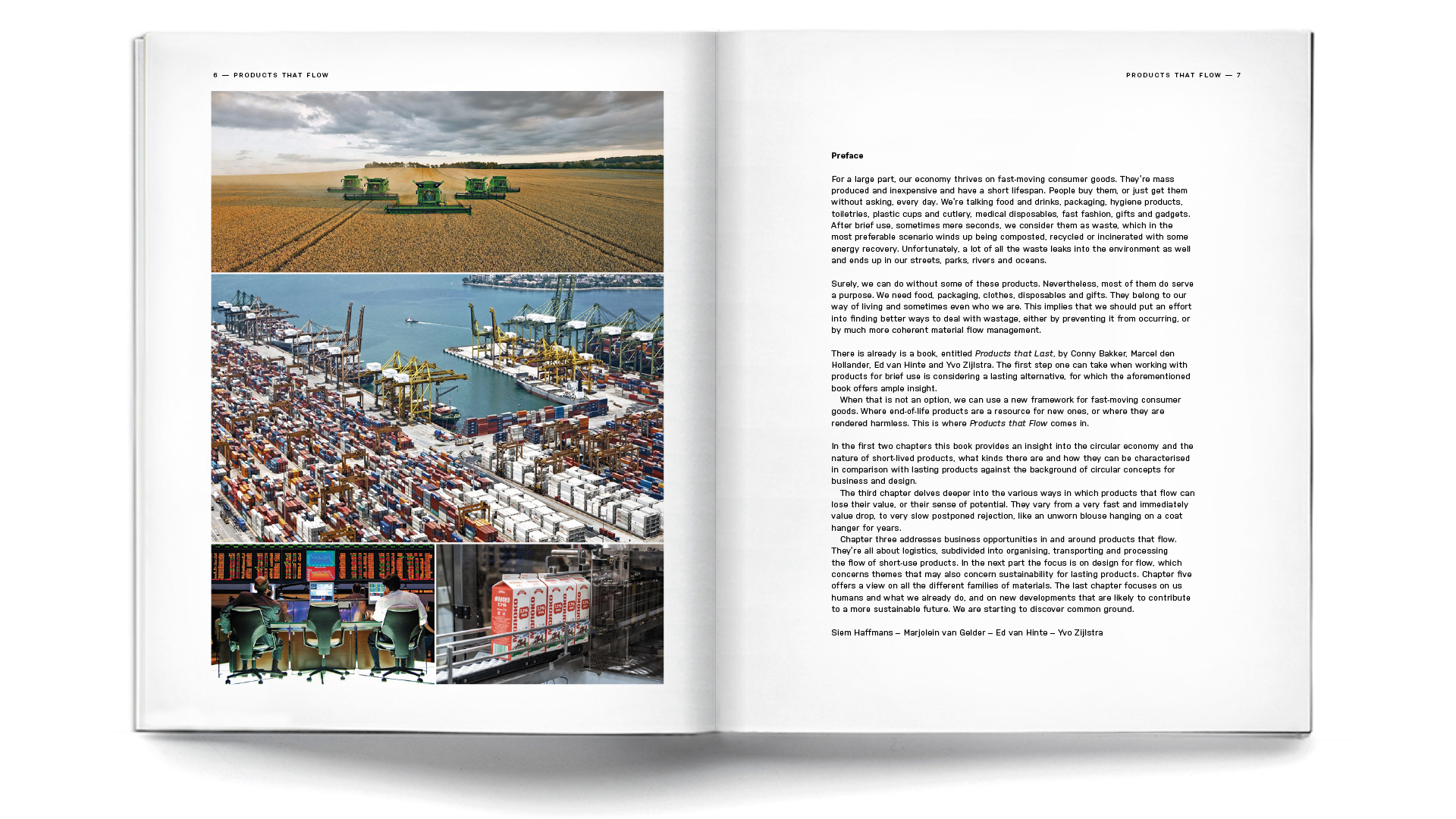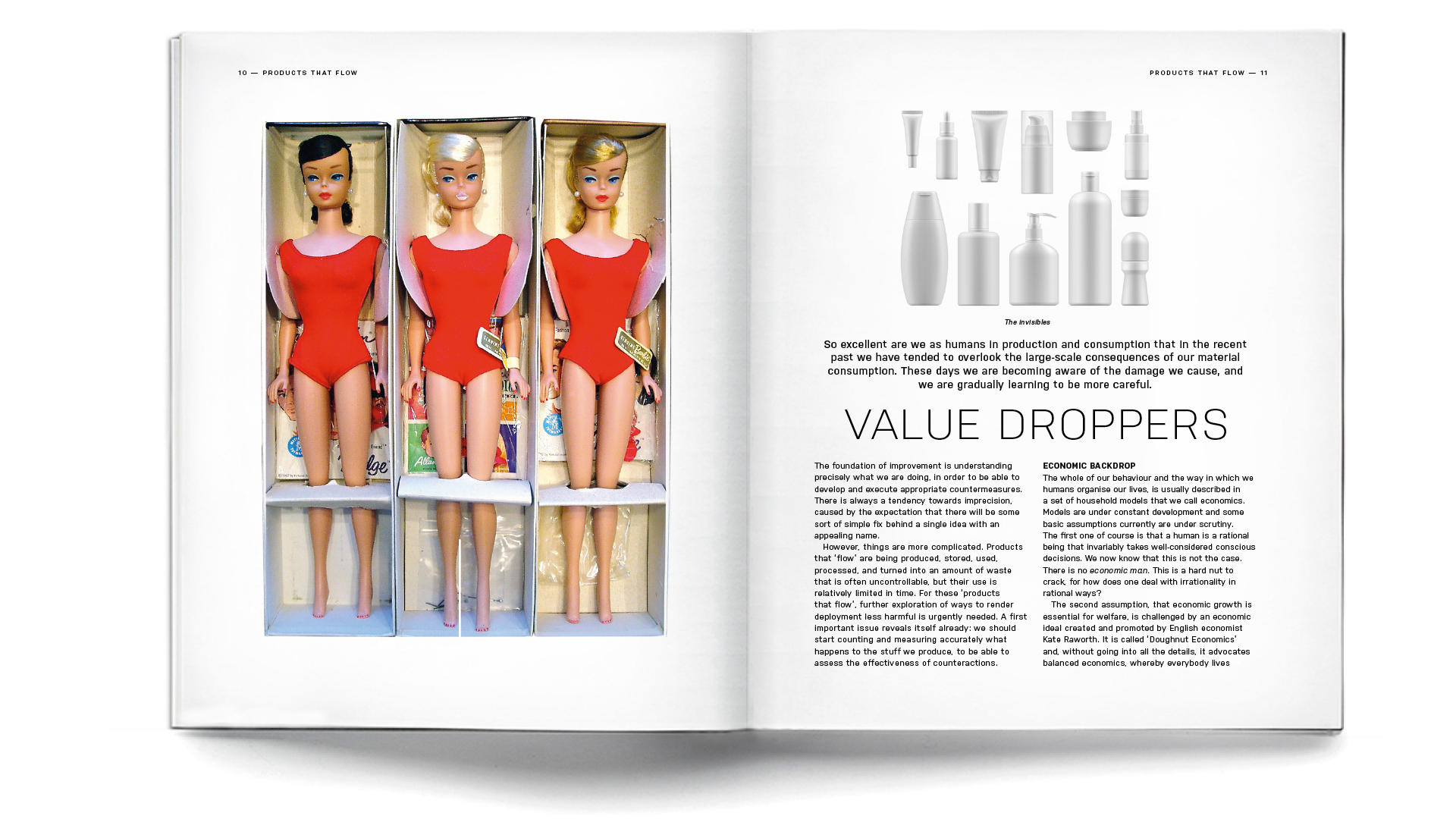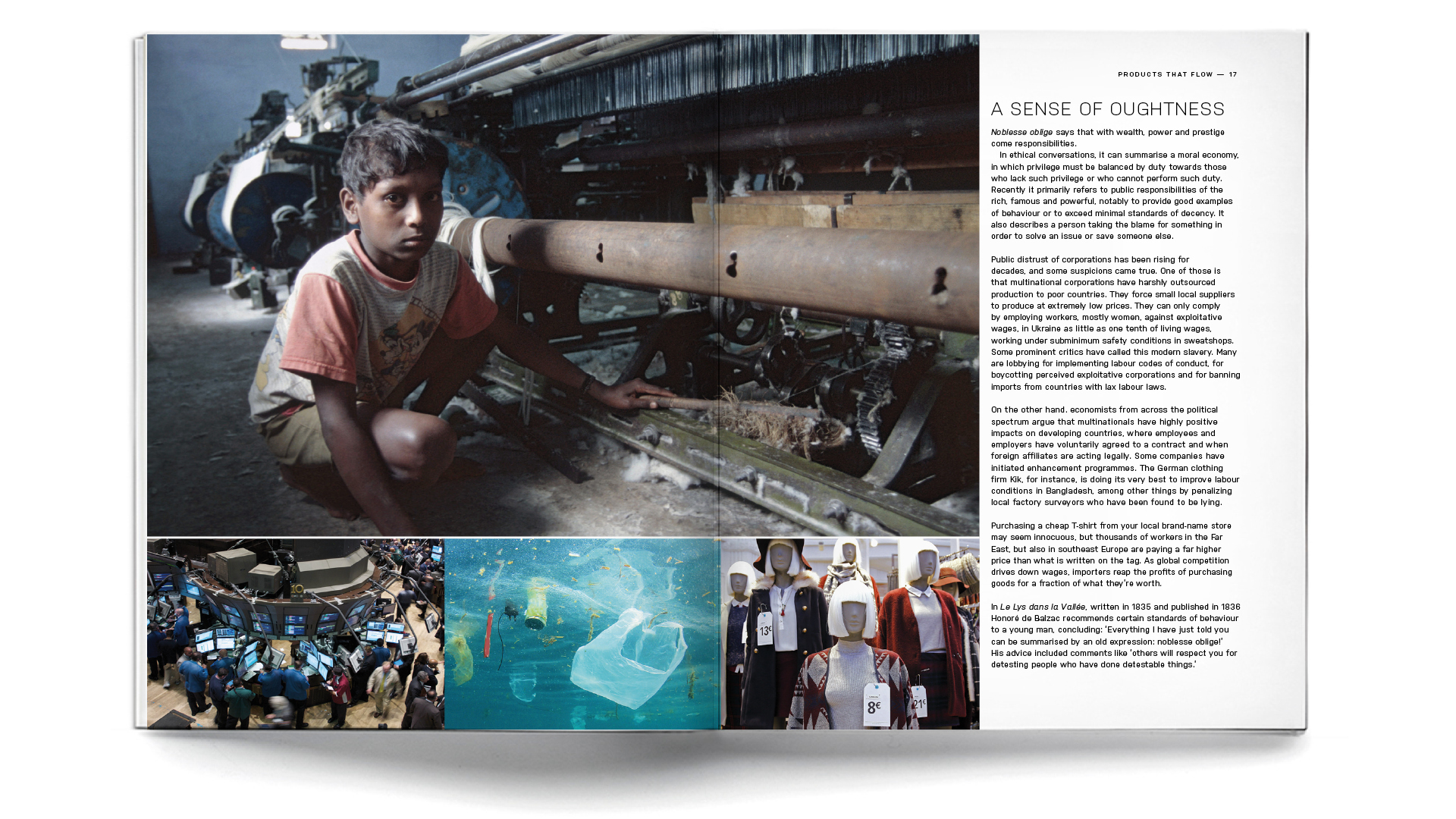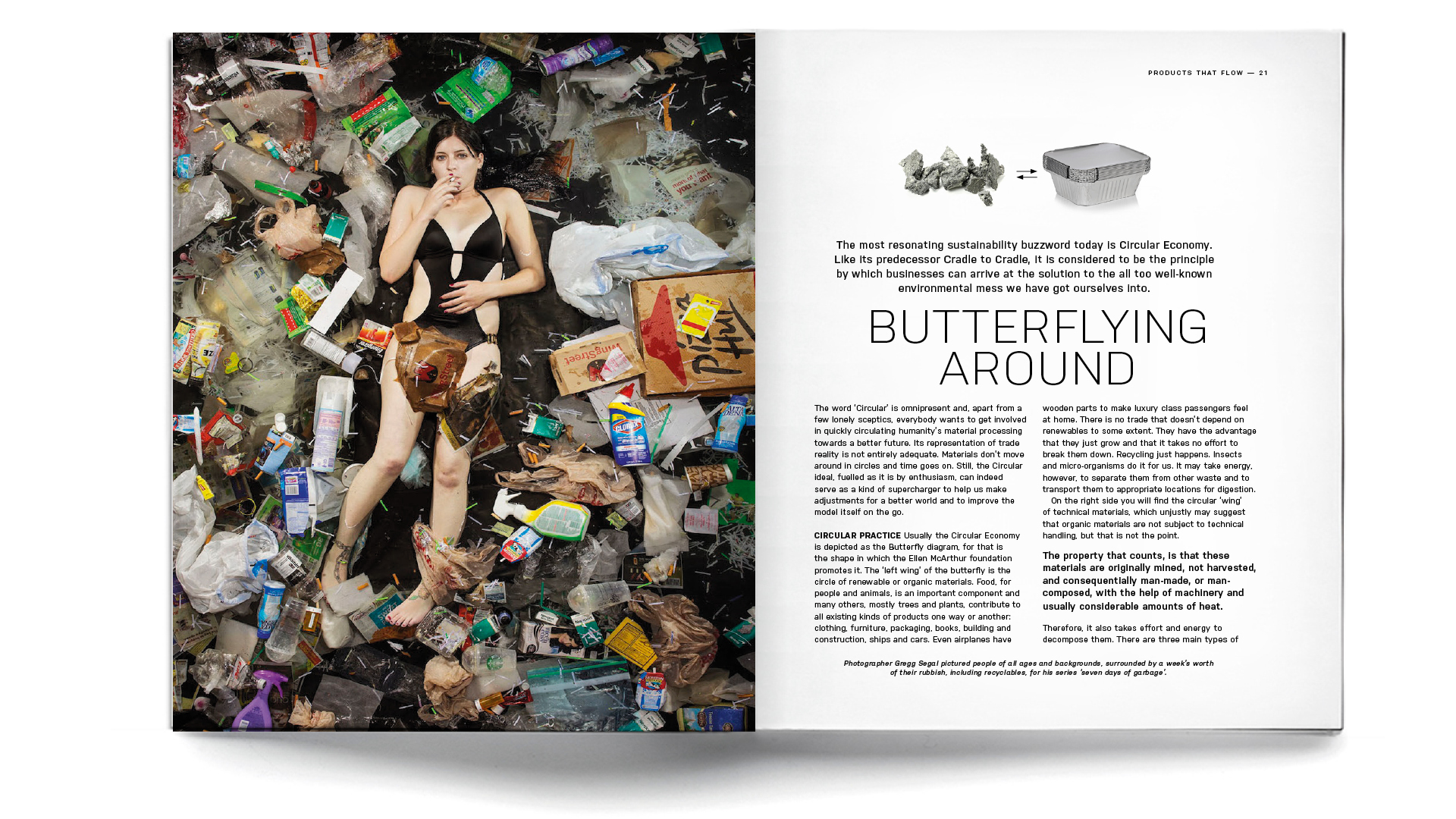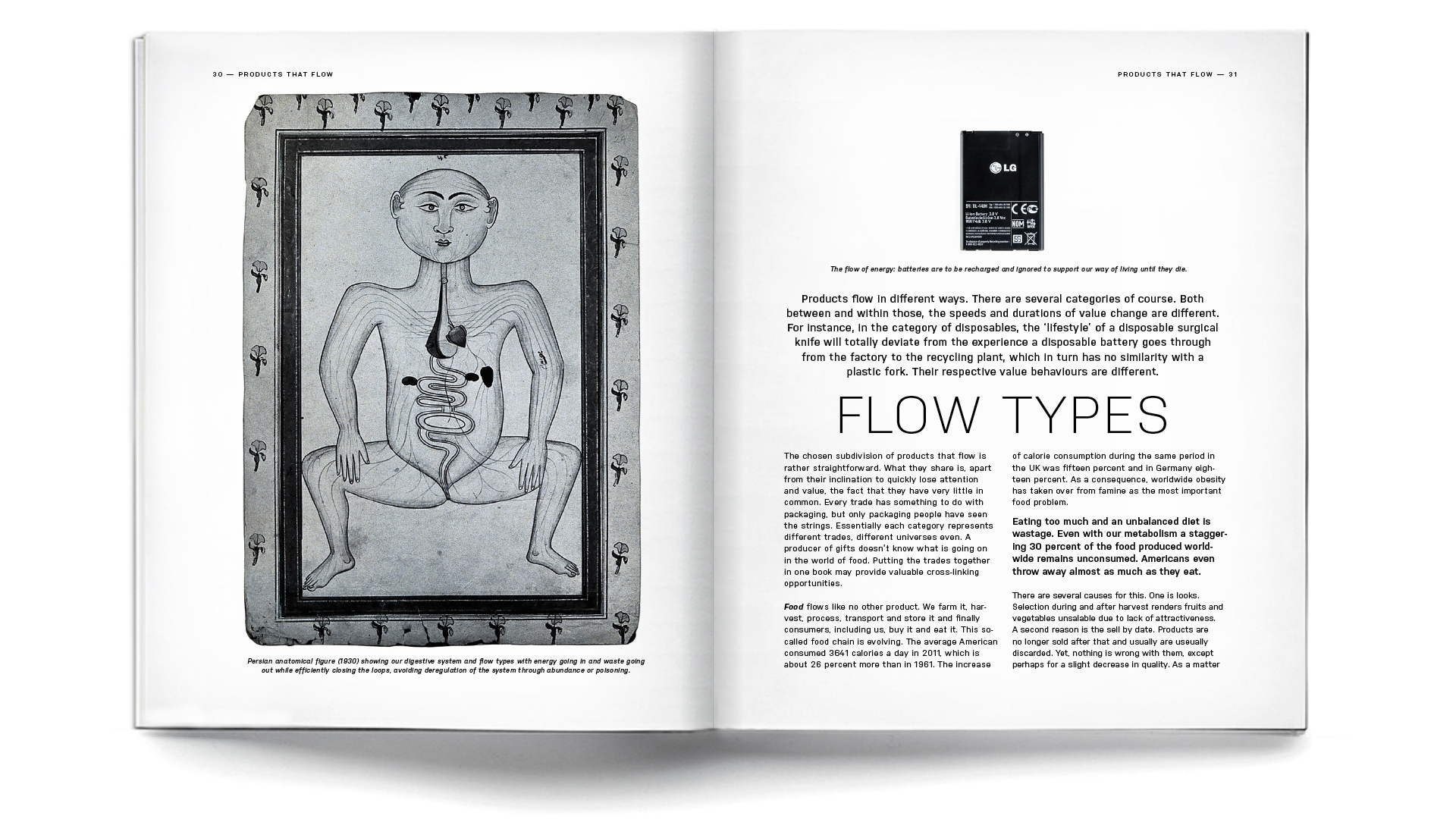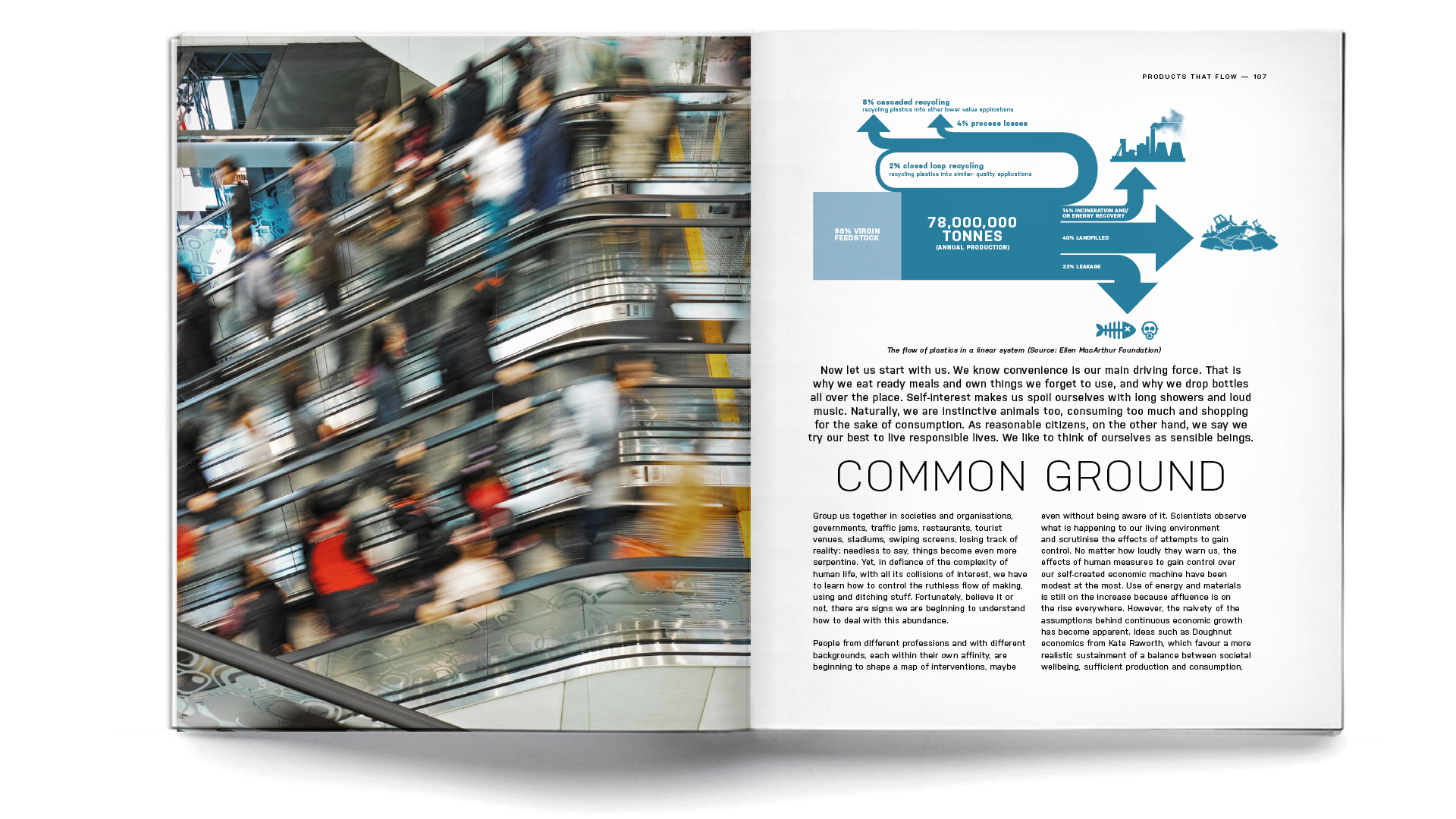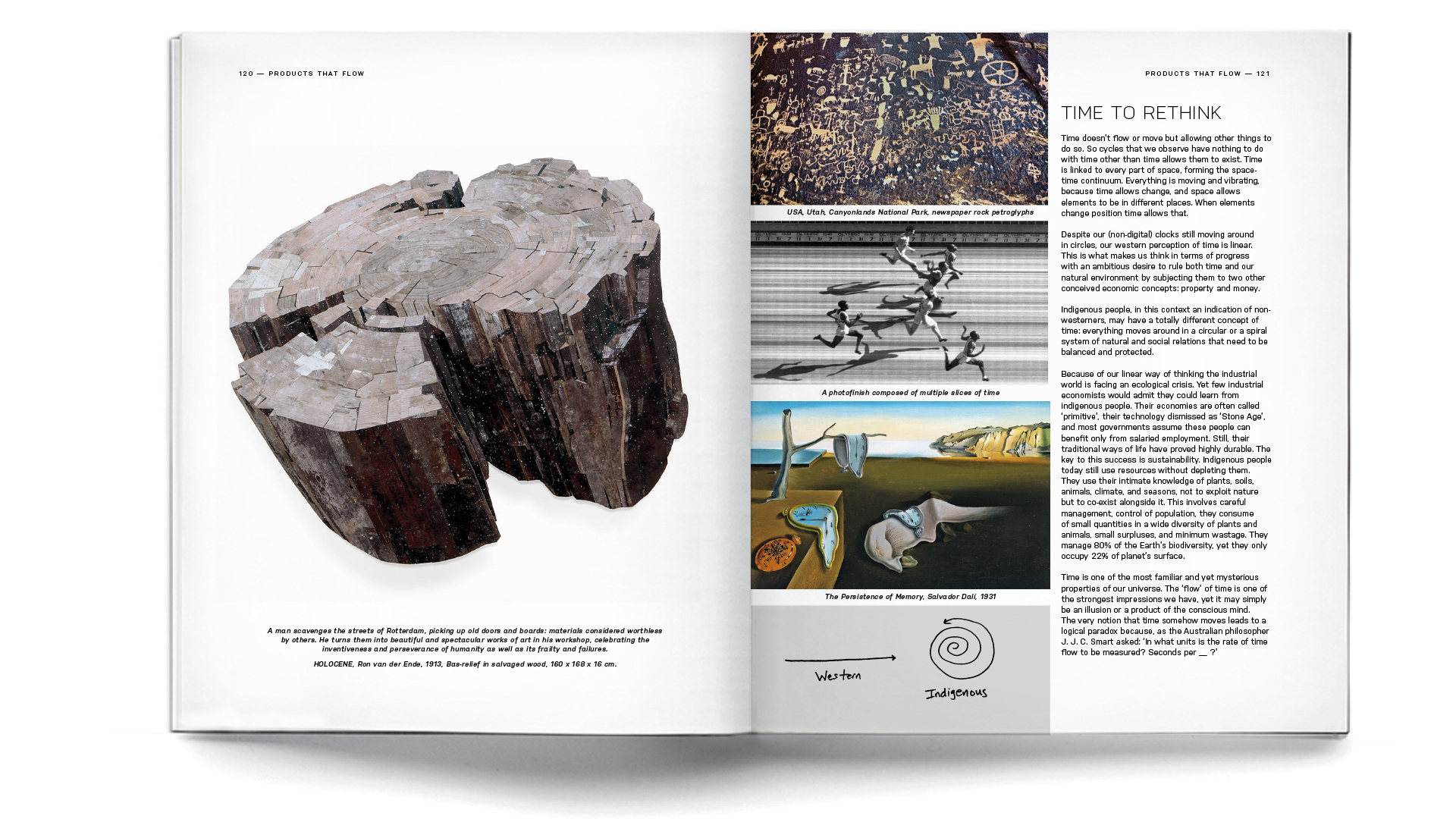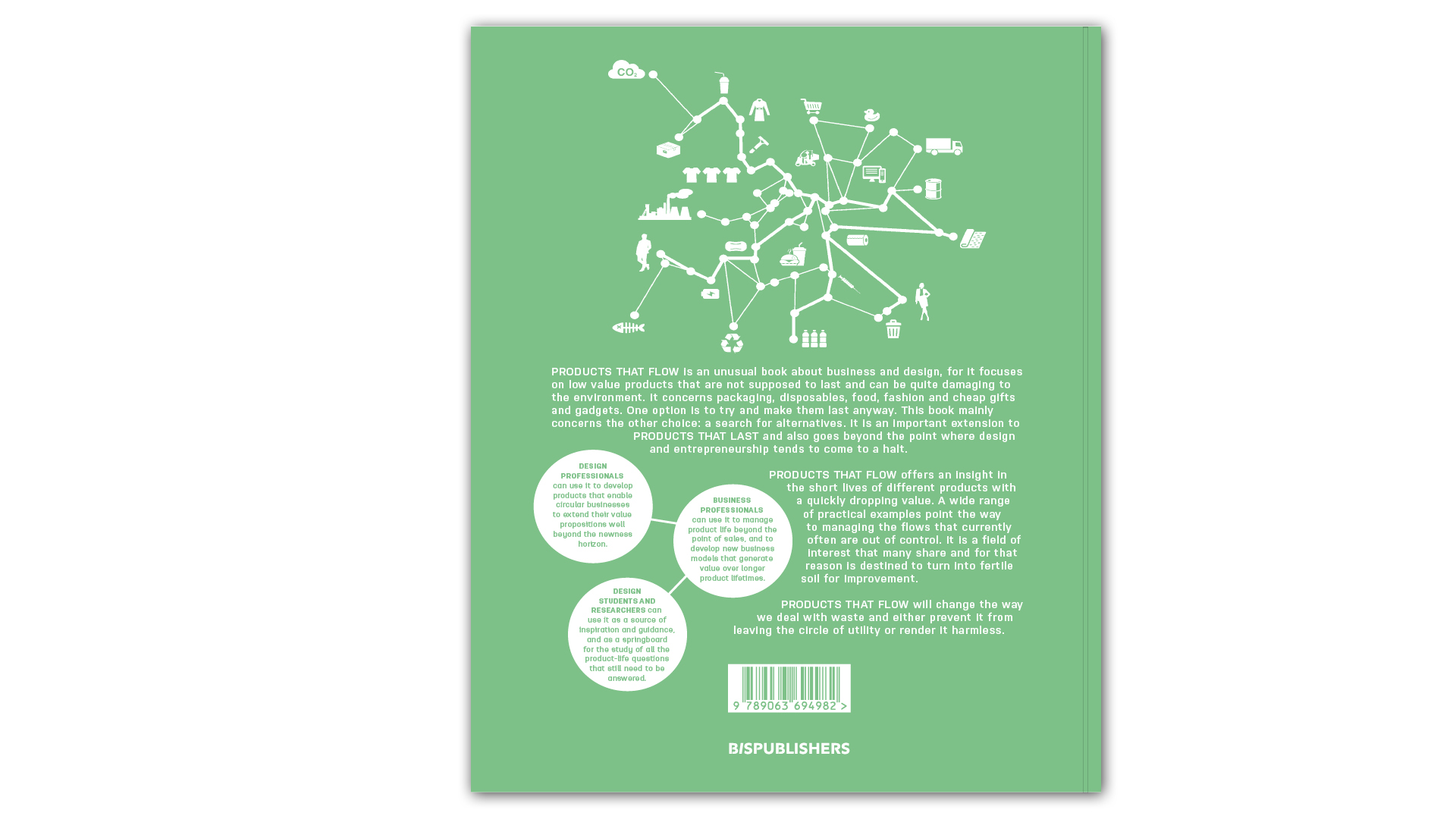A large part of our current linear economy consists of fast-moving consumer goods. After a short usage period the product becomes waste, which ends up in a waste treatment plant for recycling or incineration or, unfortunately, leaks into the environment on landfills or as plastic soup. Should we stop consuming these products? Can we live without packaging, consumables and fashion? We could do without them, but sometimes we do need packaging to protect a product and to prevent food waste. In order to stop producing more waste we need to rethink our approach to those consumables. We need a more circular approach, starting at the beginning of production and consumption: the design. Through circular business models and design strategies Products that Flow demonstrates how end-of-life products can become a resource for new ones instead of becoming waste. The book describes circular business models and design strategies to inspire designers, marketeers and business developers.
